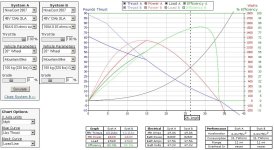DrkAngel said:
It seems that legal definitions of ebikes rate the motor watts as output power!
Laws - Legal limitation of motor by watt output.
Australia - "... power output not exceeding 200 watts"
New South Wales - "... maximum engine output is less than 200 watts"
Victoria - "... provided the motor's maximum power output does not exceed 200 watts."
Canada - "an attached electric motor of 500W or less"
Alberta - "... providing they do not have assisted speeds higher than 32 km/h (20 mph), or an electric motor producing in excess of 500 Watts (0.671 hp)."
Nova Scotia - "a power-assisted bicycle as a bicycle with an electric motor of 500 watts or less,"
Saskatchewan - "must have engines with 500 watt power or less"
United Kingdom - "require that the motor has an average power output limited to 200 W (250 W for tricycles and tandems),"
EU-definition electric cycle - not universal but " 250 W on bicycles" is common
India - "Vehicles with below 250W"
New Zealand - "with motor output power of less than 300W are classified as "not a motor vehicle". "
United States - "an electric motor of less than 750W (1 hp),"
Worldwide, the watt rating is output watts - horsepower.
As the standard, for legal - legality purposes anyhow.
I would have to expect that anything sold, rated for legal use anyhow, would use this same output watt = horsepower standard!
From a legal standard, if the eBike is being rated for sale, for "legal" road use, the eBike would have to be rated as the peak watts of output power - HP (Horsepower).
Of course, if the bike is for off-road or illegal use then the gloves might come off, any twisted perversion.
Throw on a powerful enough controller and a "legal" 750w peak output motor, at the same rated voltage, can draw 3000w - so a 3000w rated (battery-controller-motor) eBike? ...
Not on my watch!
Worse! That 3000w input rating is at the most inefficient point of the eBikes power output, the 3000w peak input might be outputting 150w ... at 1mph!
Oh! Even with a potential 3000w input the peak output is still the same 750w!
Sorry ... I just can't condone, or take any part in allowing such an unethical-deceptive-twisted "rating".
I "must" speak out - fight against it.
After all ... we don't want to seem related to politicians!
PS I never intended to state, or imply, that a motor is rated at a specific output. Rather, that a motor at a specified voltage has a specific peak output - watts.
More controller amps, beyond the needed for basic max peak output watts, is only a factor at lower rpms. The 9C motor mentioned previously outputs maximum power-watts-hp from a 50A controller, it will accept power from a 150A controller but only at low speeds and by increasing inefficiency horribly.
Never increasing peak output power-watts-hp!


